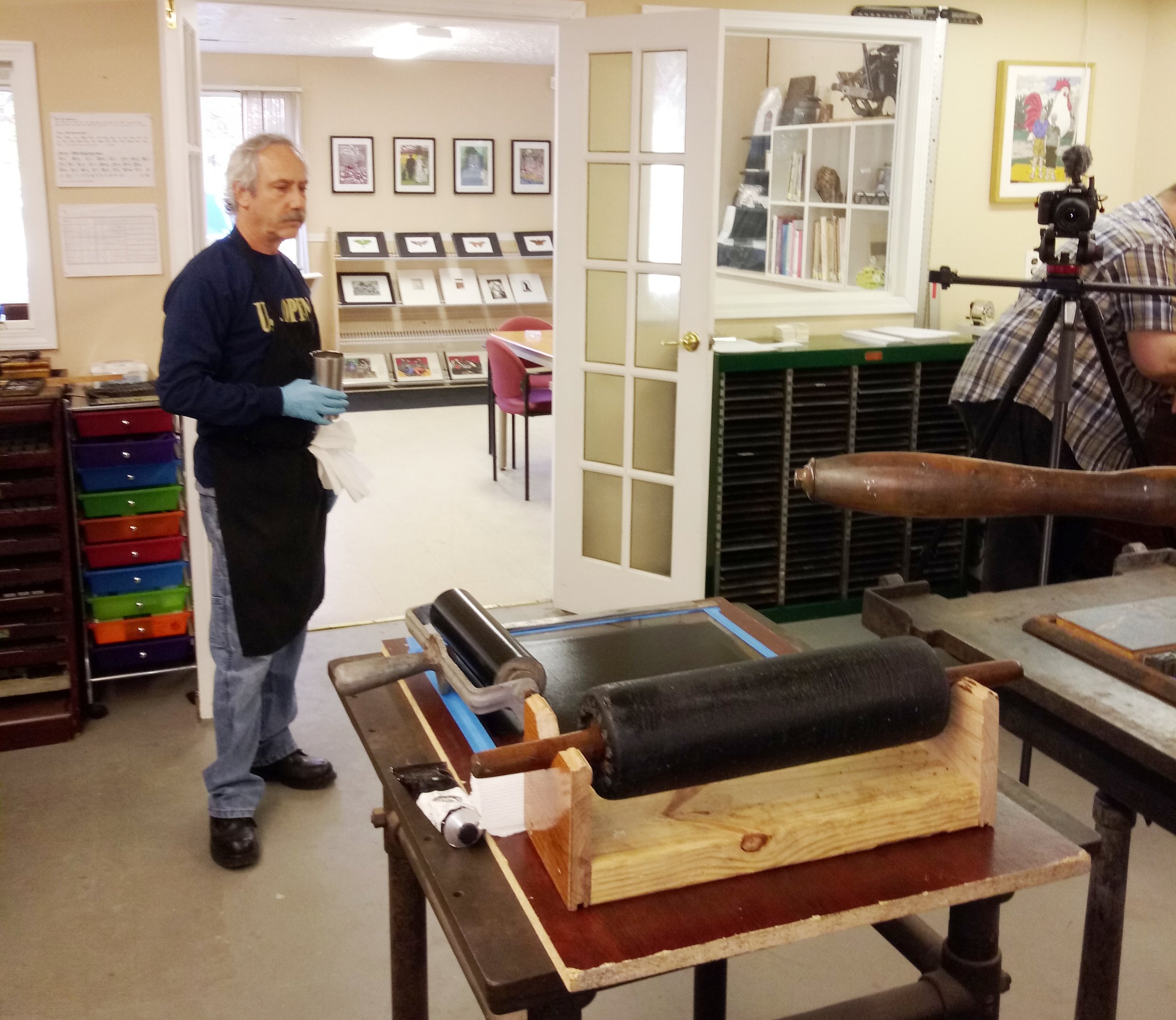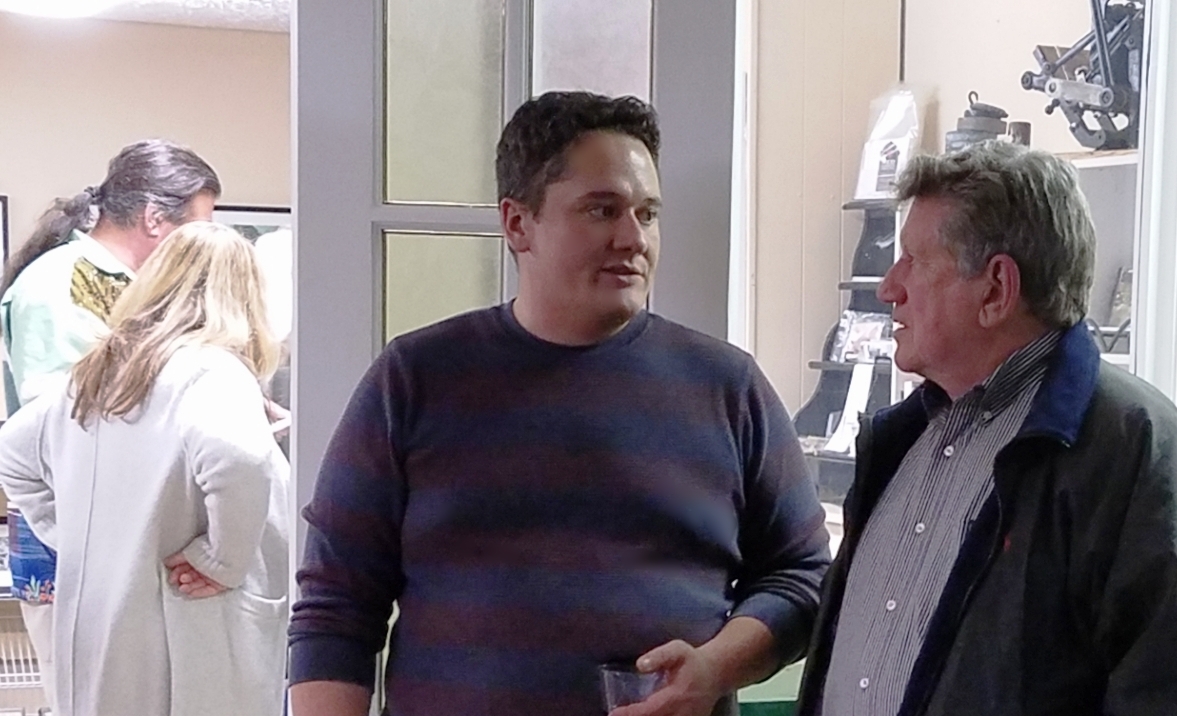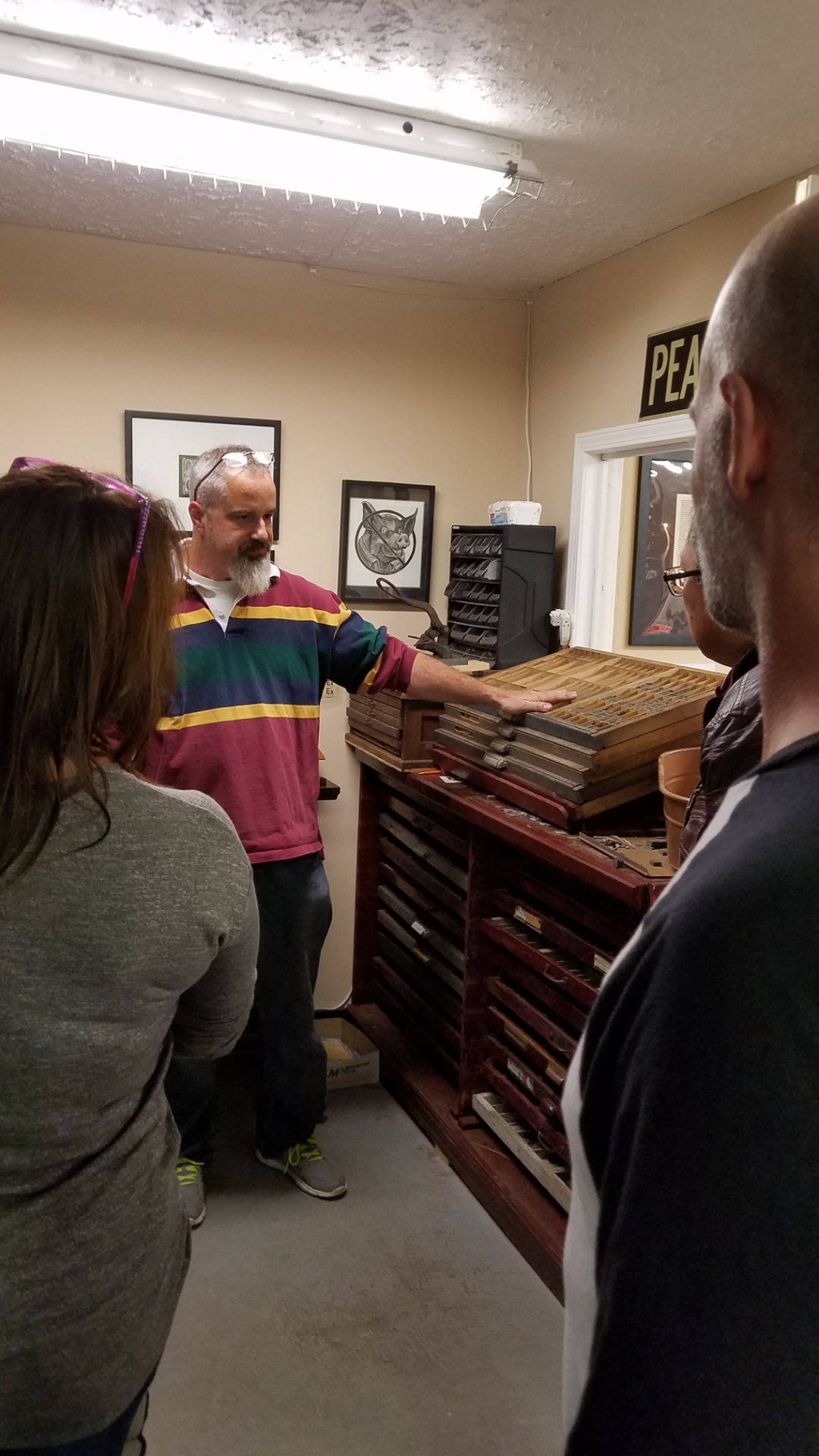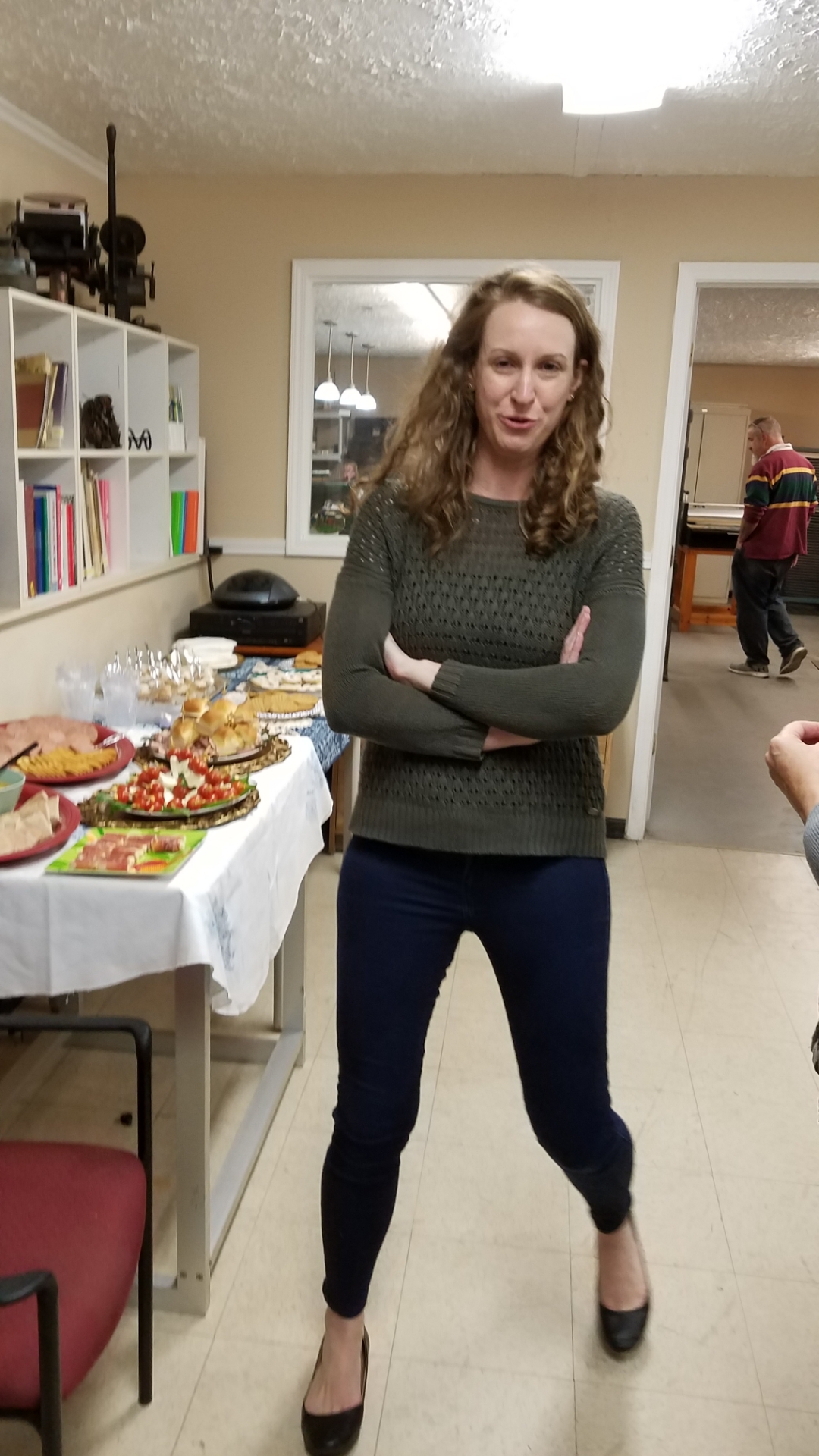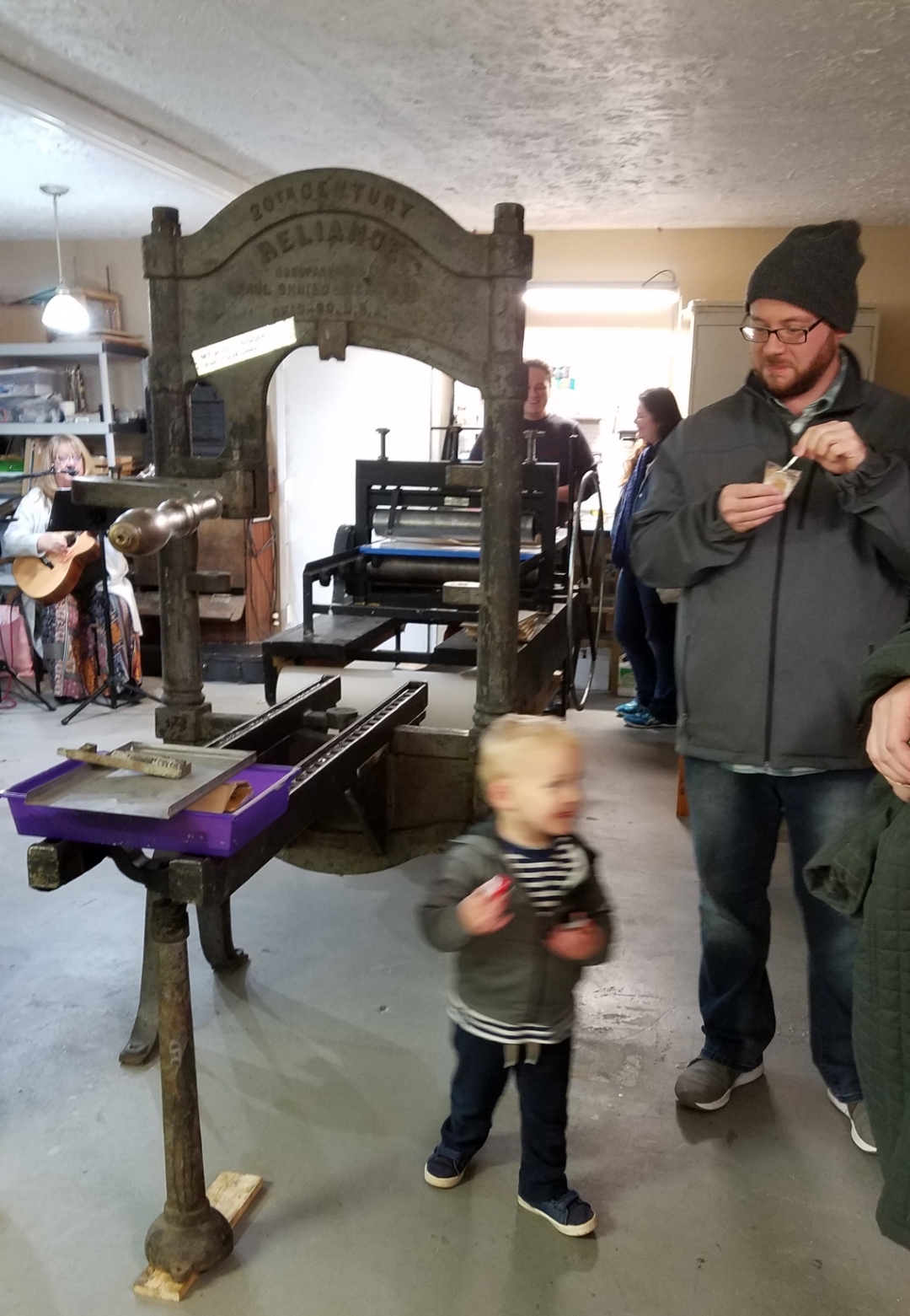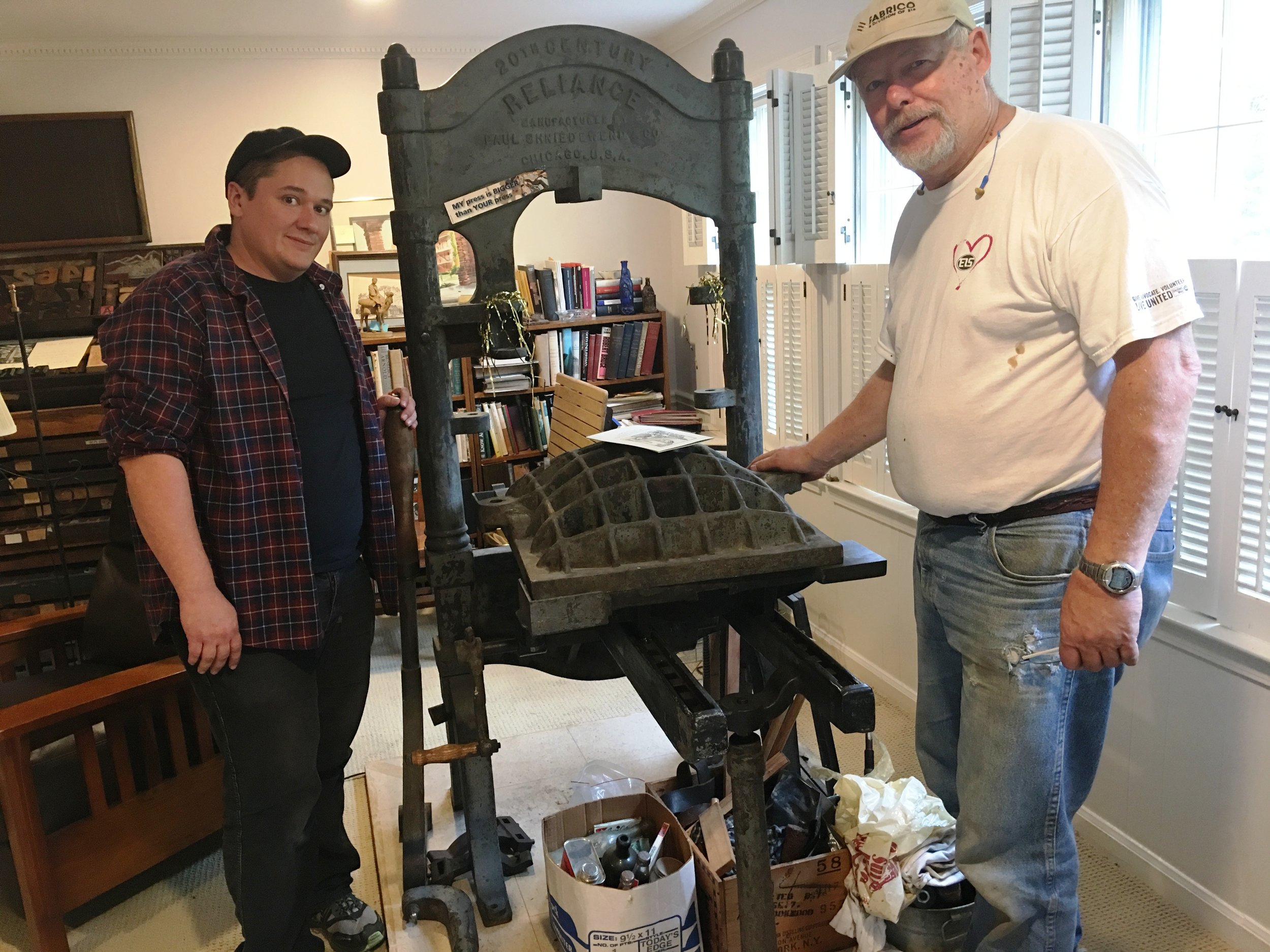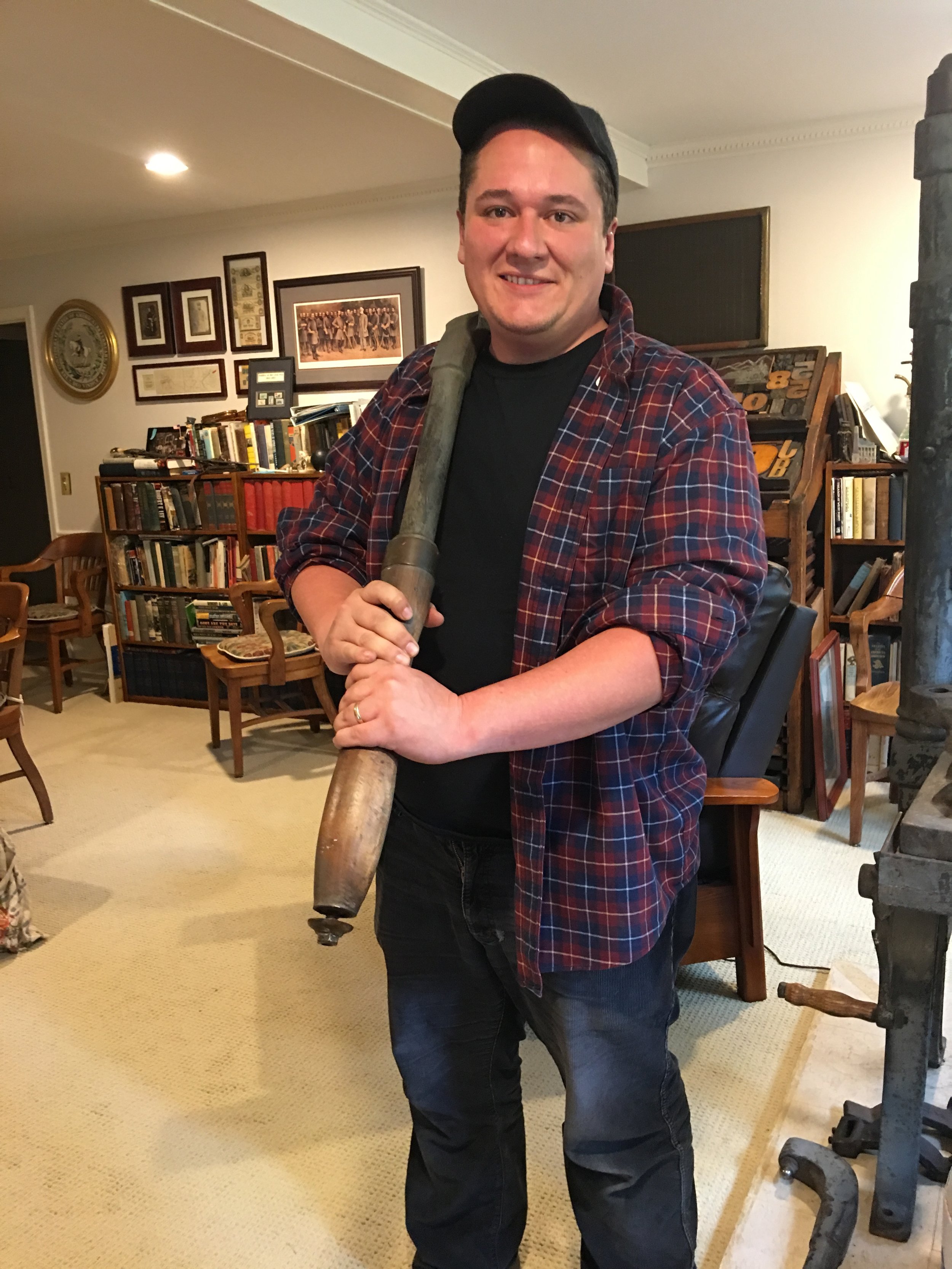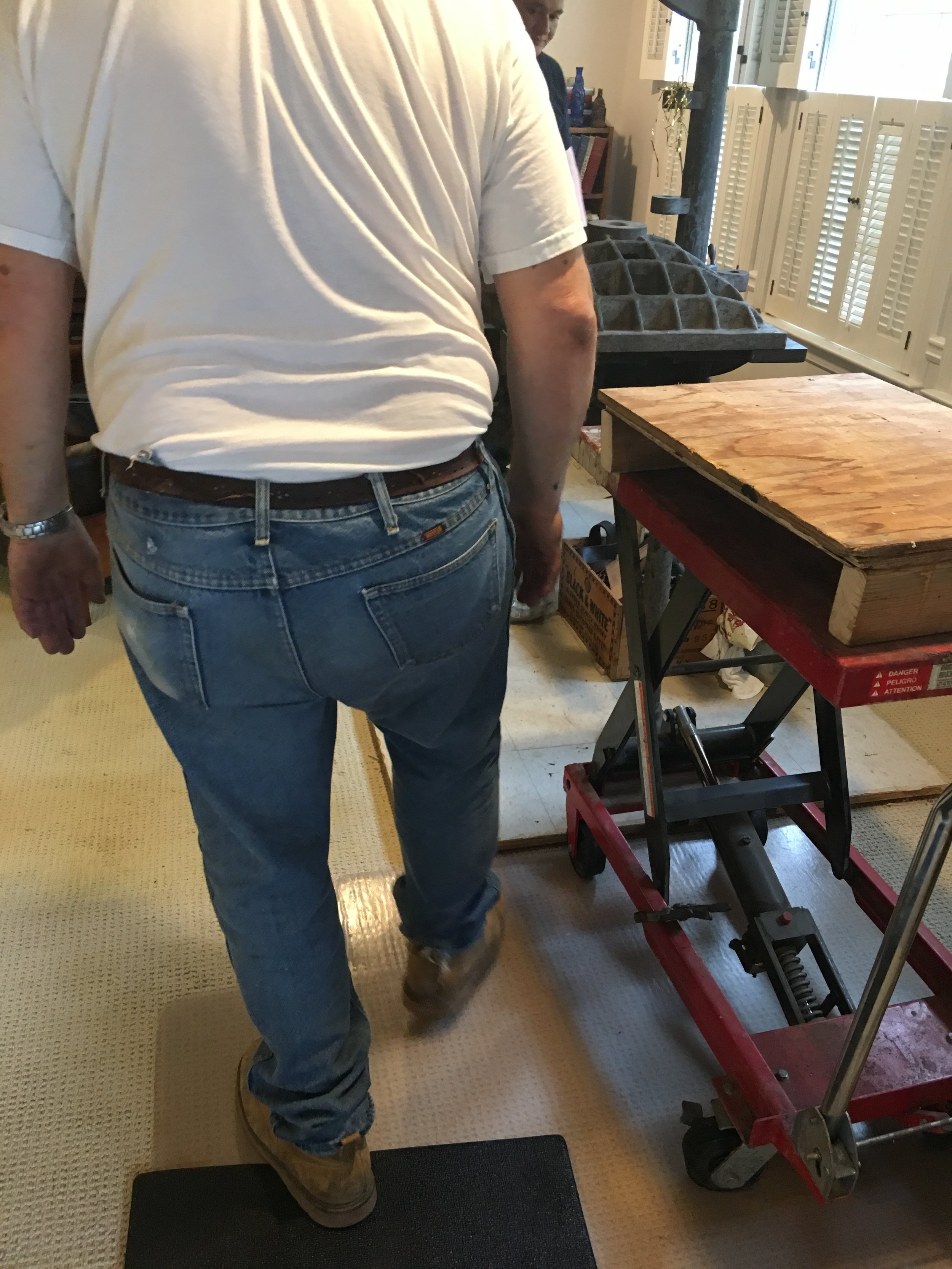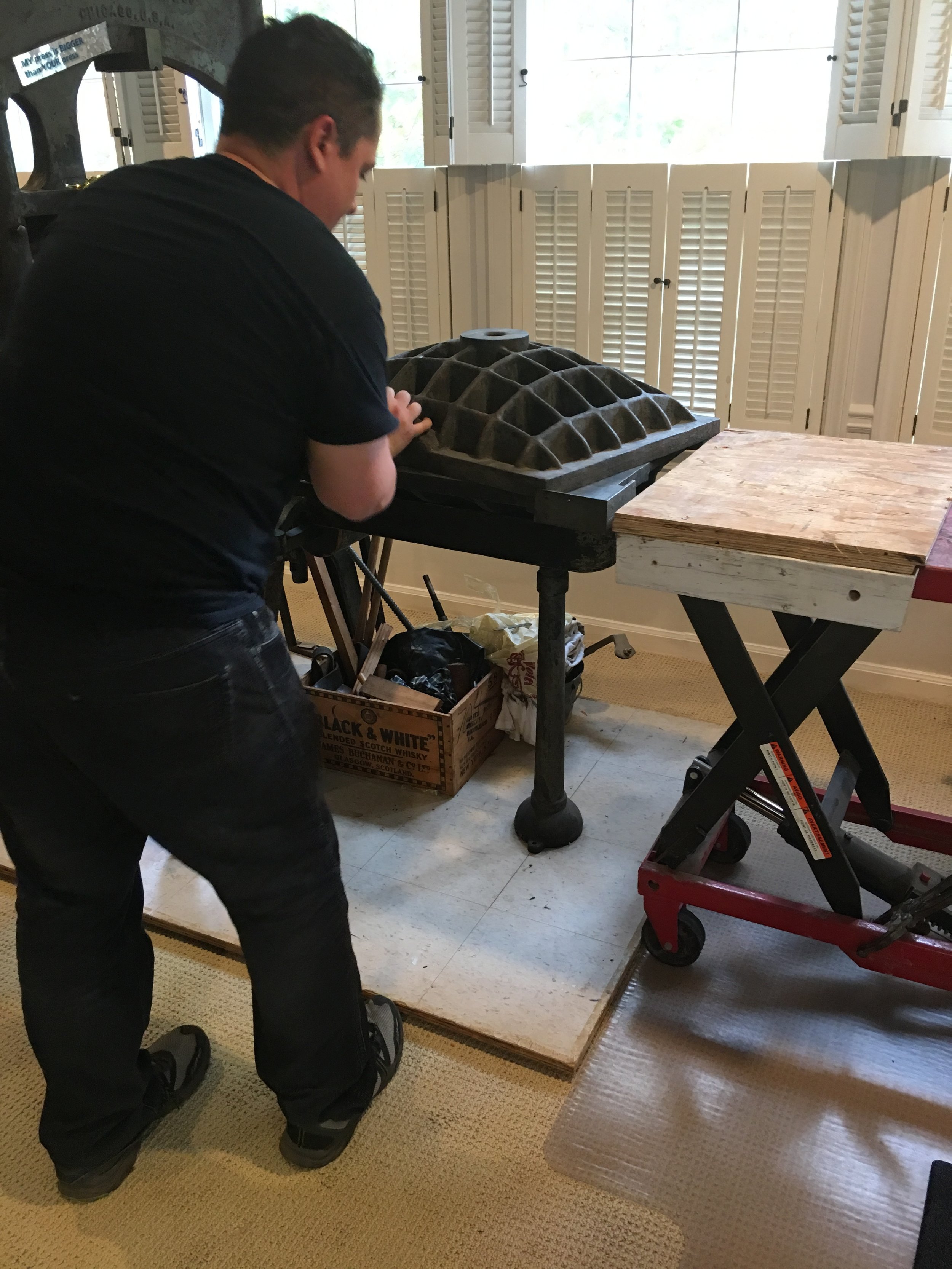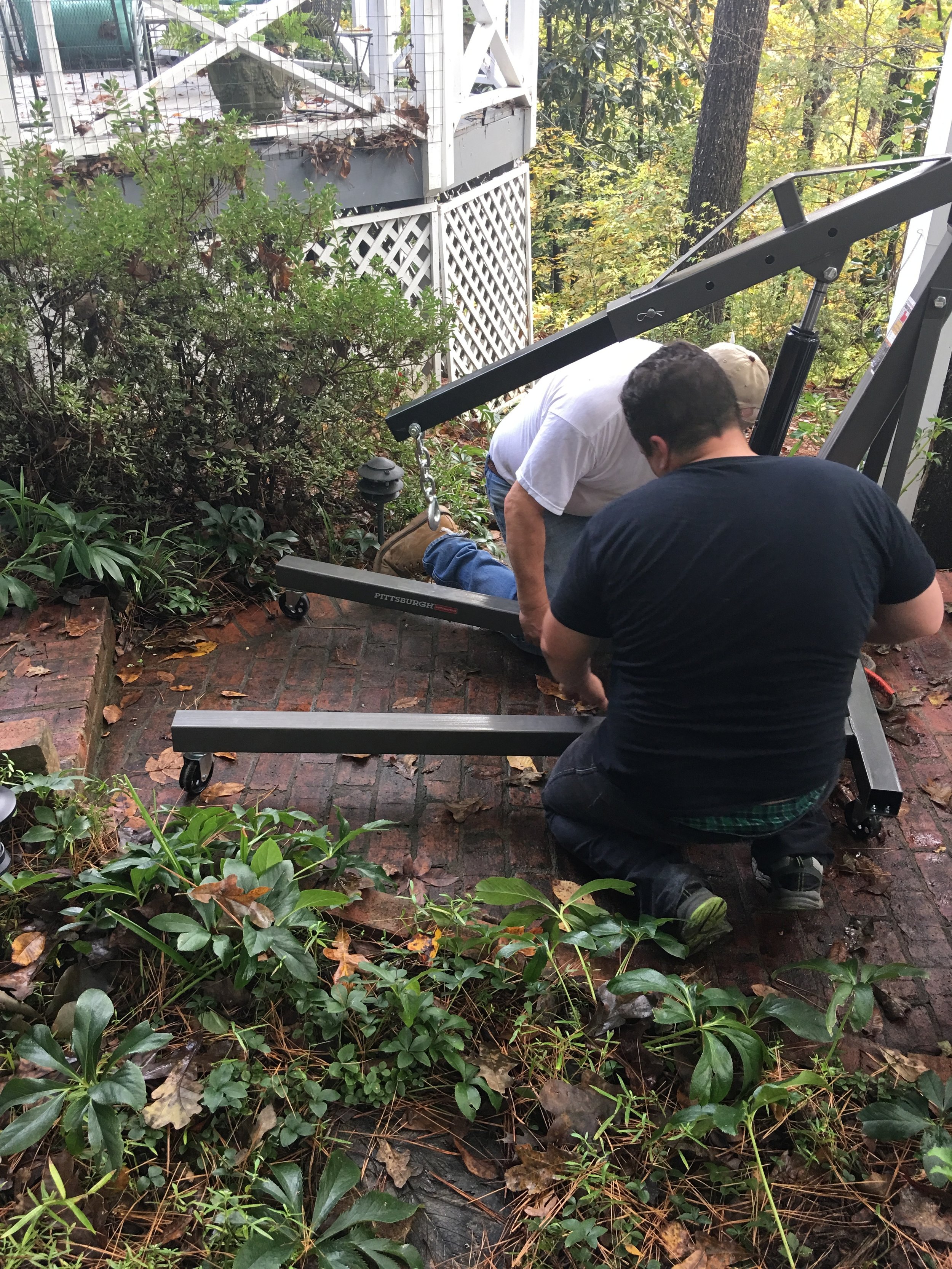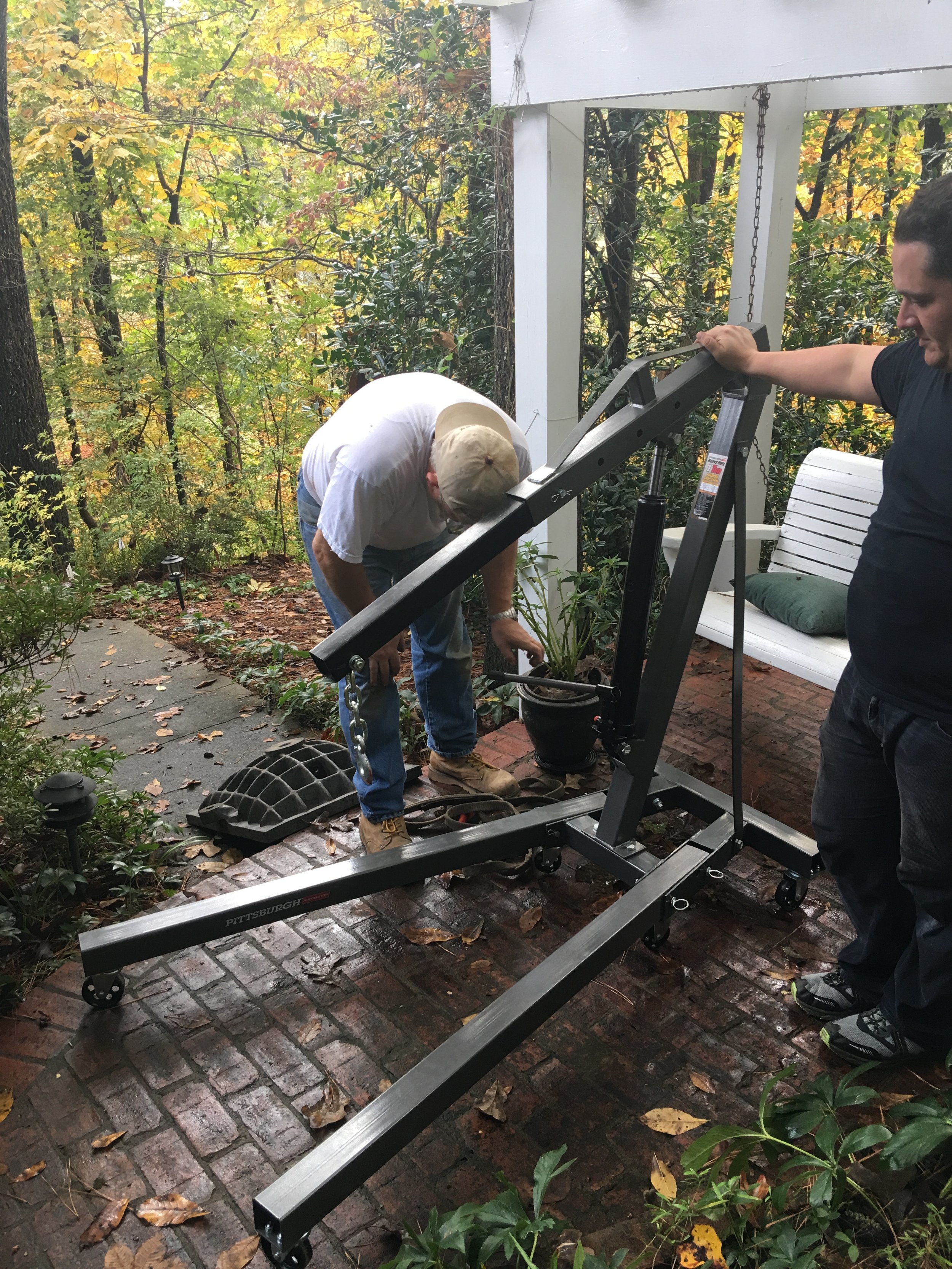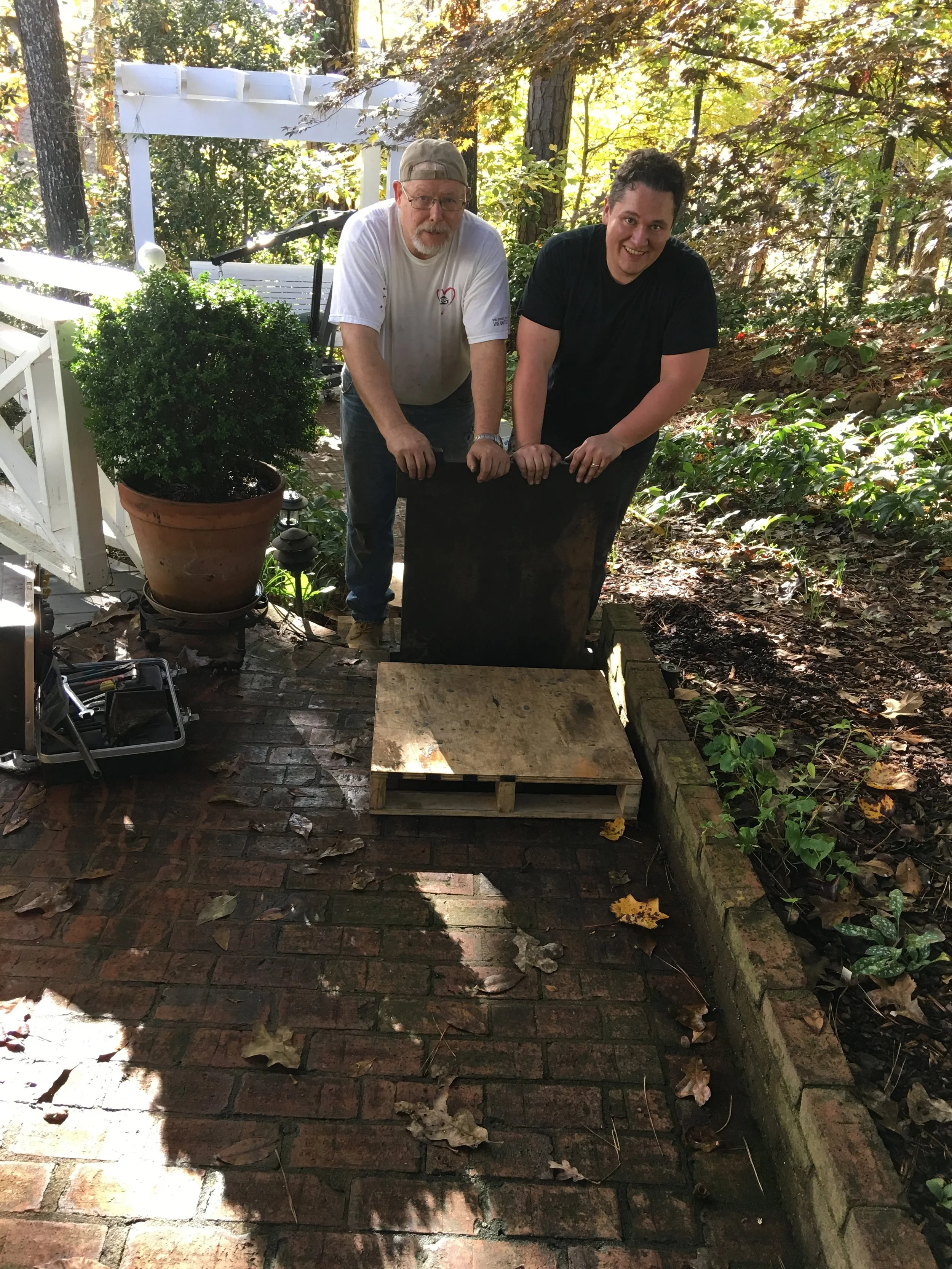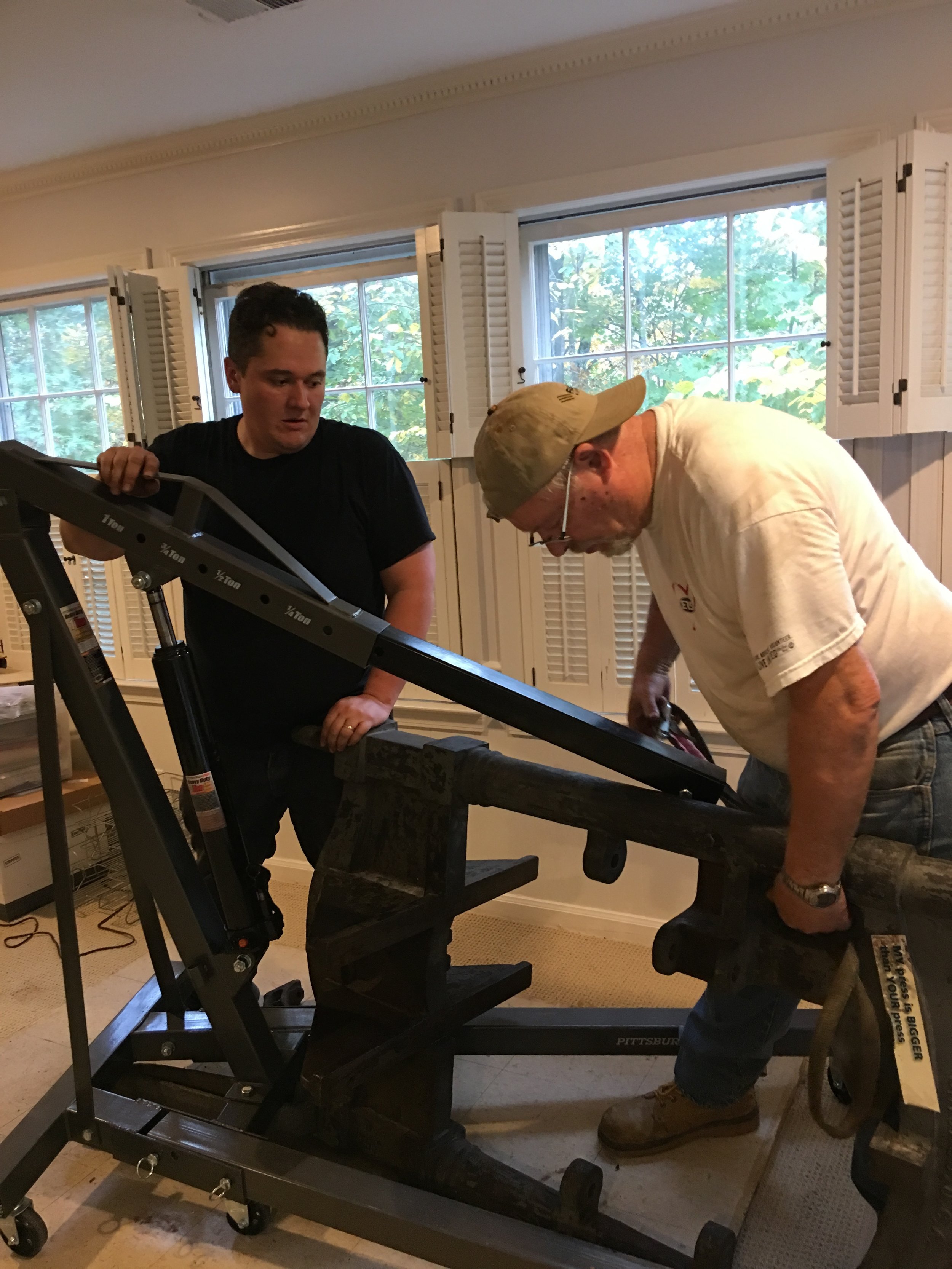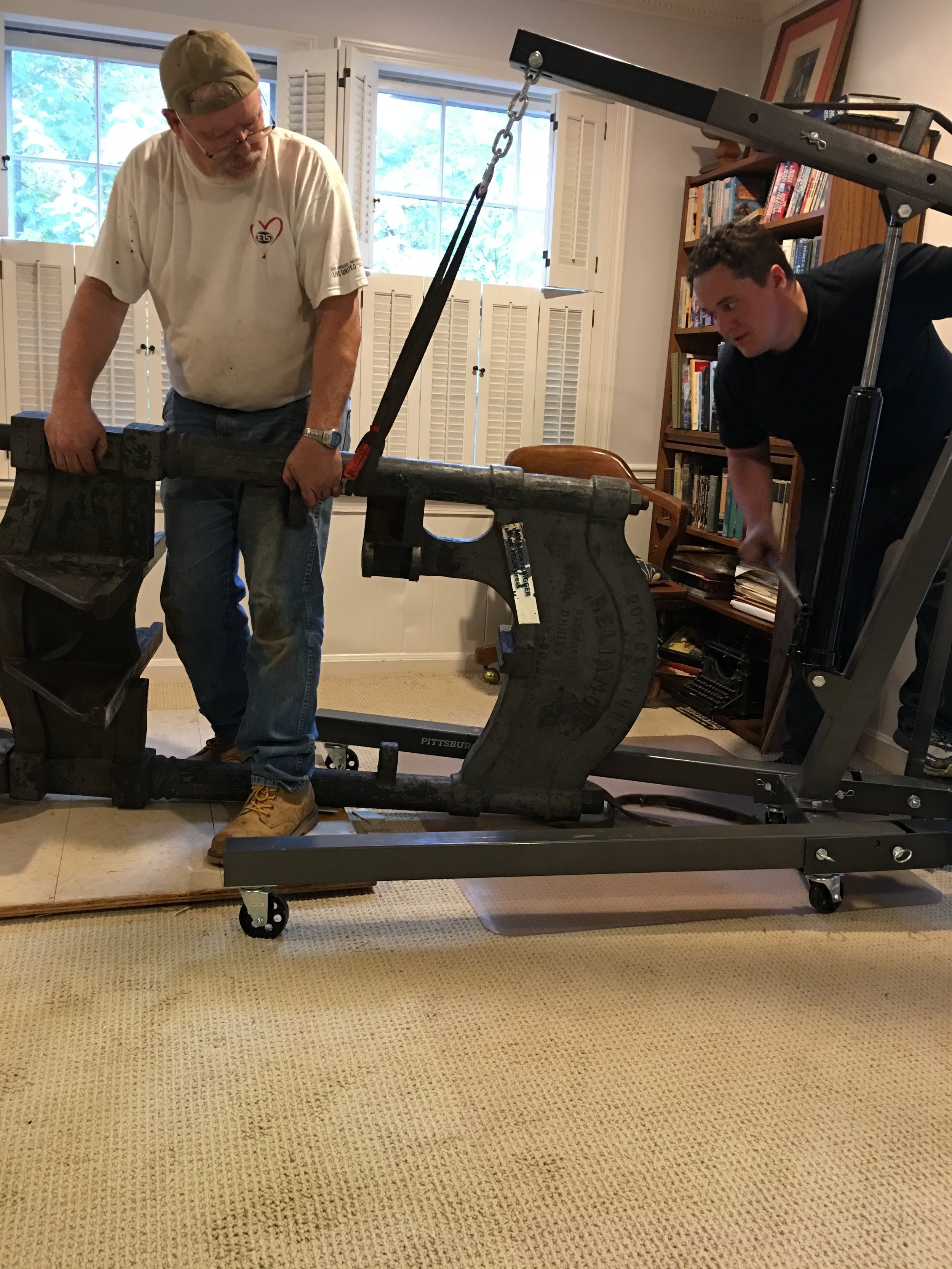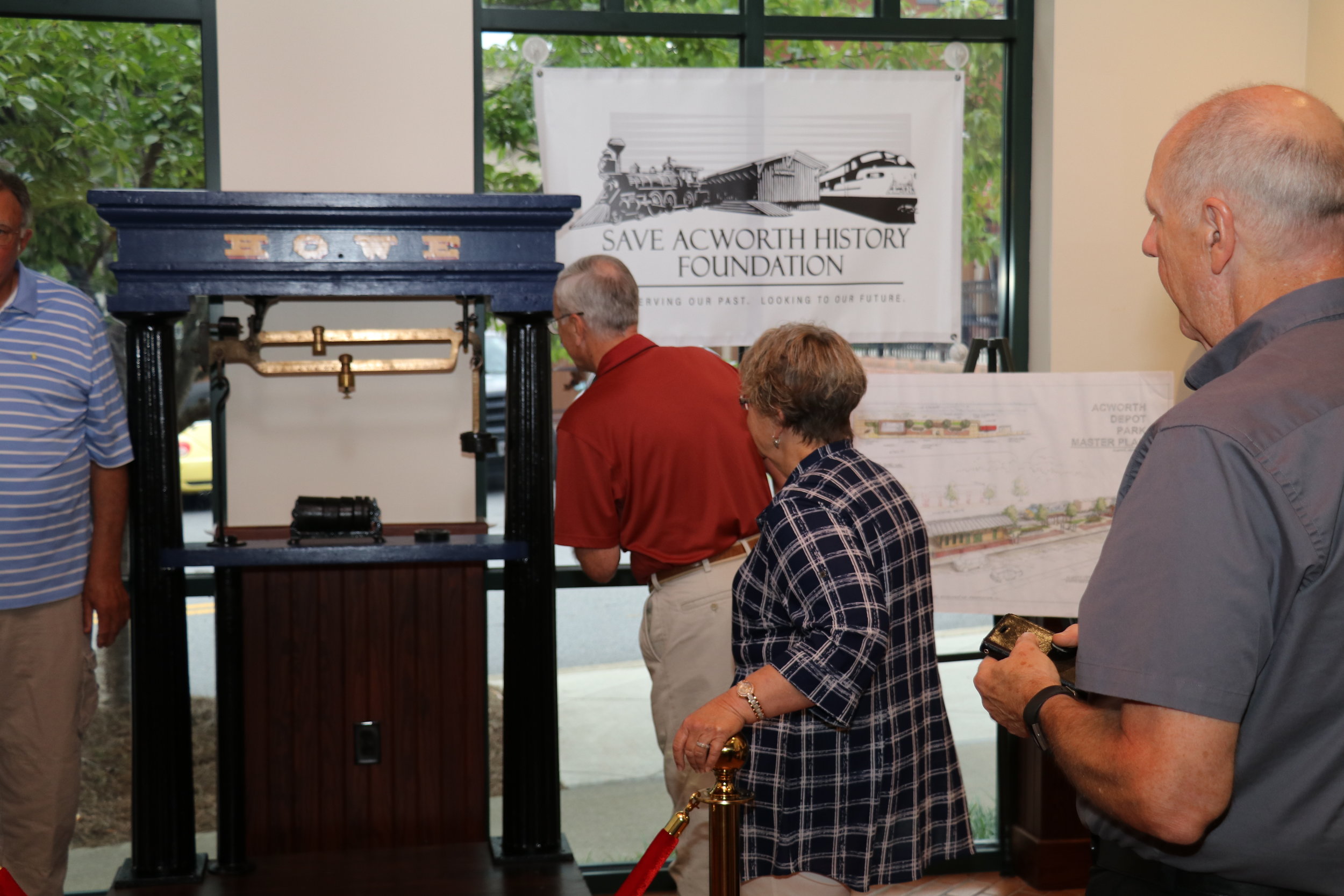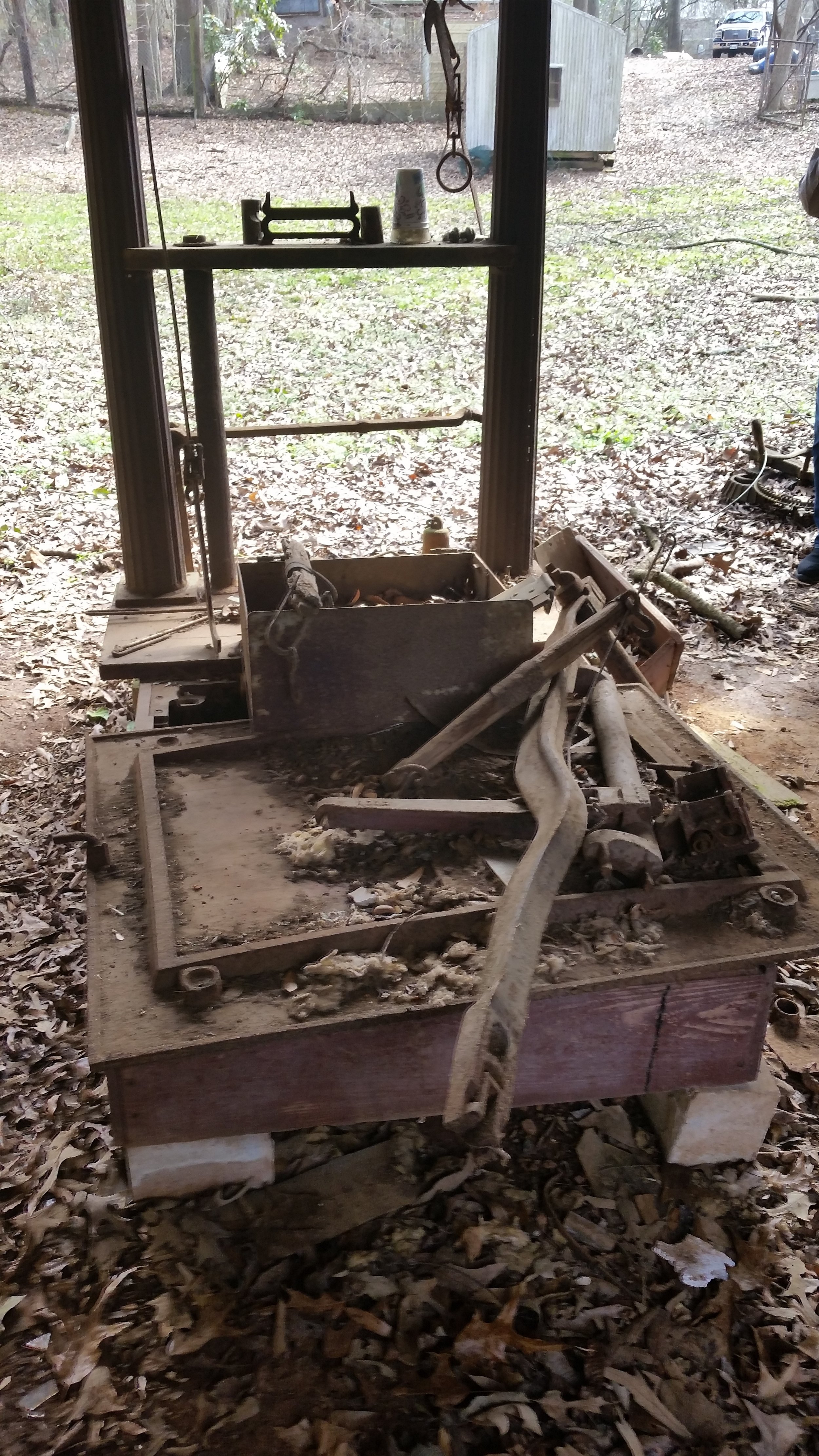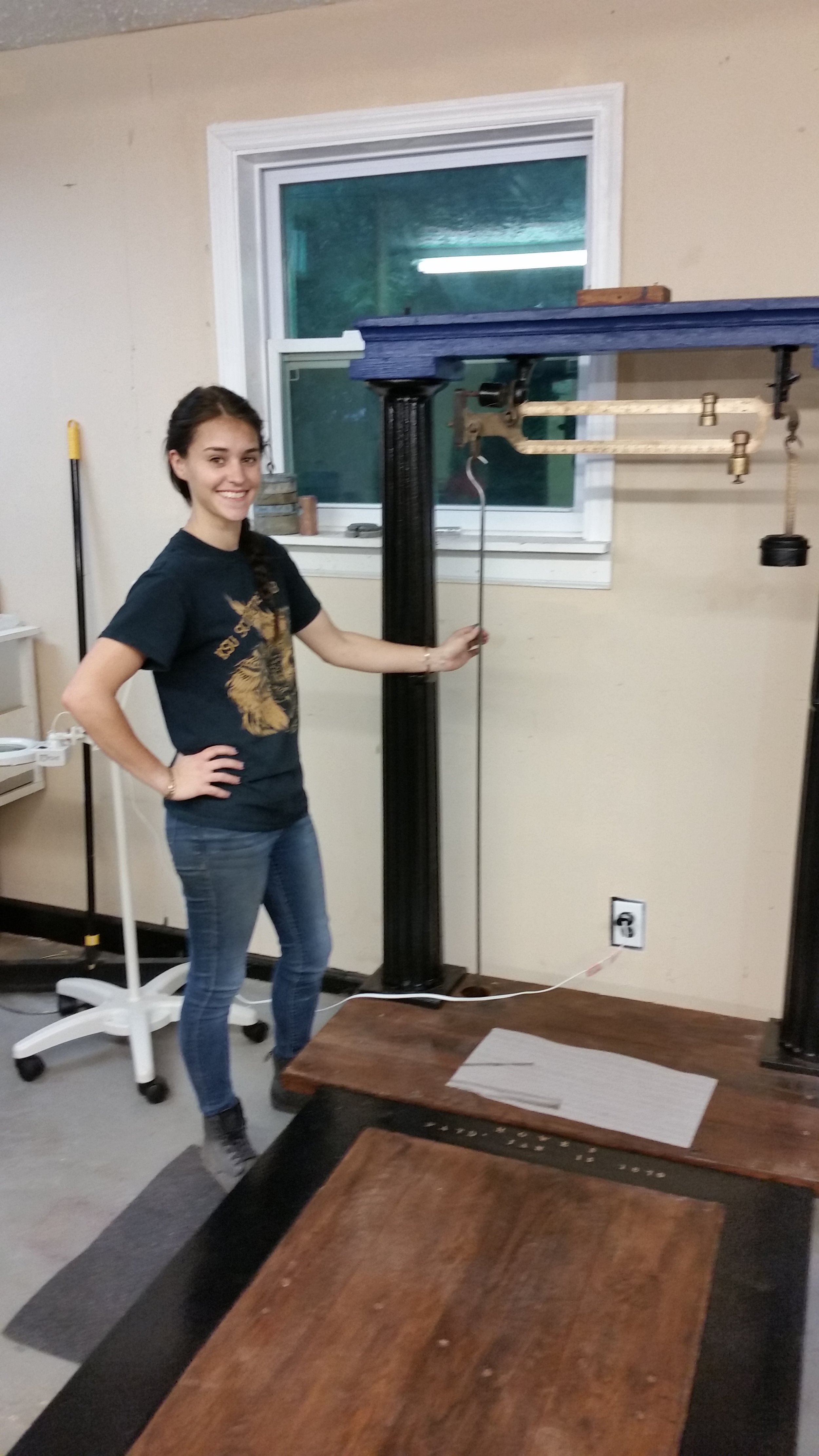The Rosback Perforator Press
Last year when we received an unusual donation of two unusual machines. Patented in 1888 these treadle operated presses had one function; making a series of tiny holes in paper like you would see in a page of postage stamps. Since we had no room for them we reached out online to see if anyone else in the printing and letterpress world might have an interest. After a few weeks, we were contacted by Eric Johnson, founder of the North Bay Letterpress Arts workshop who has been looking for just such a press for over 5 years. The treadle operated perforator is indeed a rare piece of equipment!
Farflungland stamp book
Eric’s search for the Rosback started when he received a gift of a ream of gummed back label sheets. He came up with the idea of designing and printing stamps for The imaginary Kingdom of Farflungland. These whimsical postage stamps pictured below were perforated using a modern steel rule which creates a series of dashes. Eric knew that the Rosback Perforator with it’s miniature holes would create a more authentic looking stamp.
The North Bay Letterpress Arts workshop is located in Sebastopol, California just north of San Francisco where they practice what they call the poetry of printing. It is also a non-profit workshop that produces both prints, posters and book arts. Much of their output, is poetry and there is a strong connection between the spoken word and printing by hand. You can visit their website at
Farflungland stamps
Note they also have a nice bookpress





